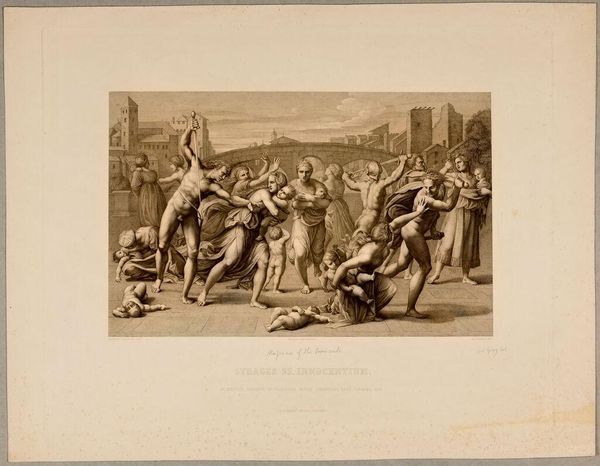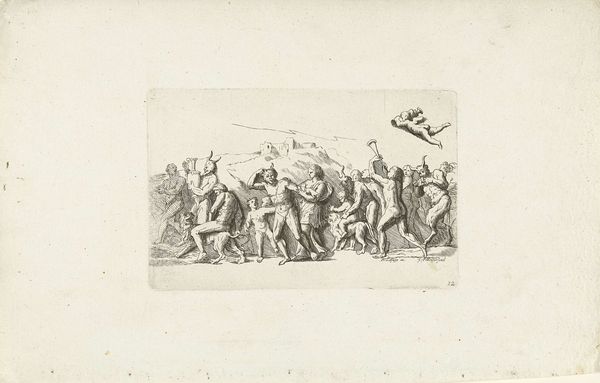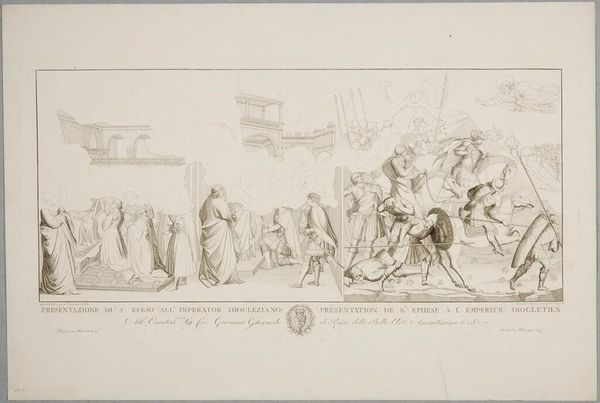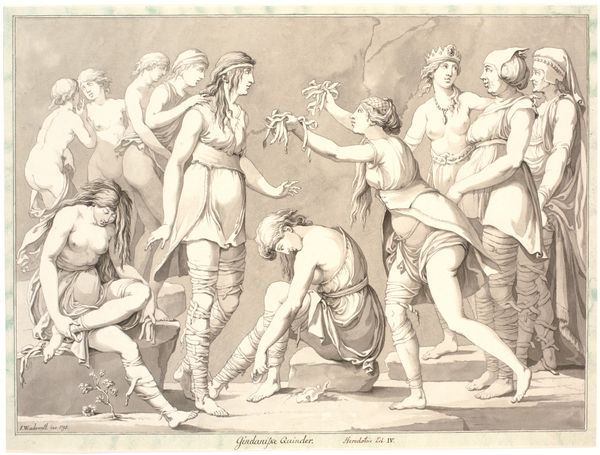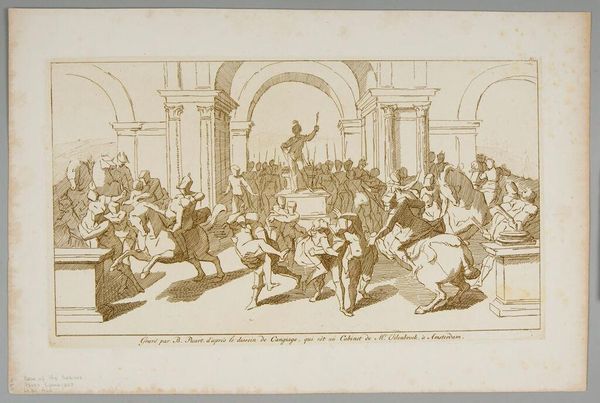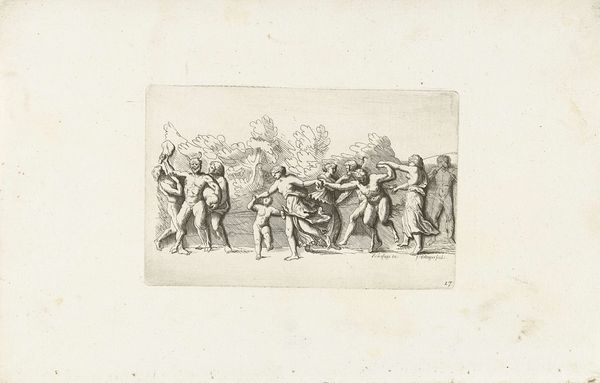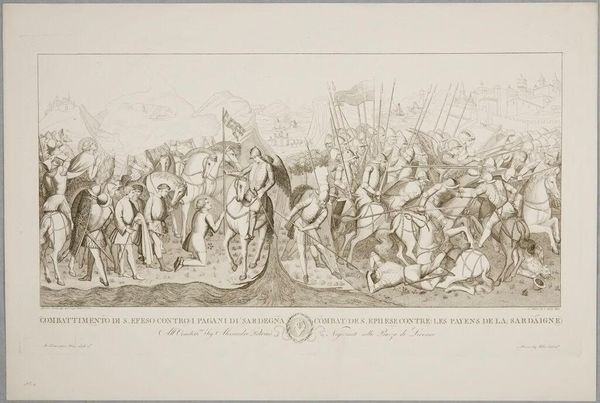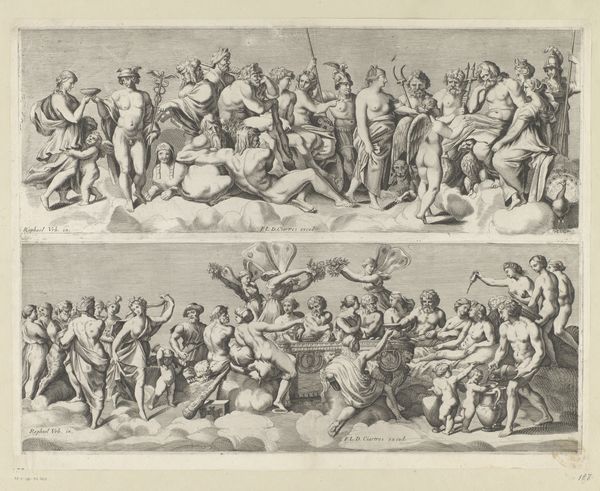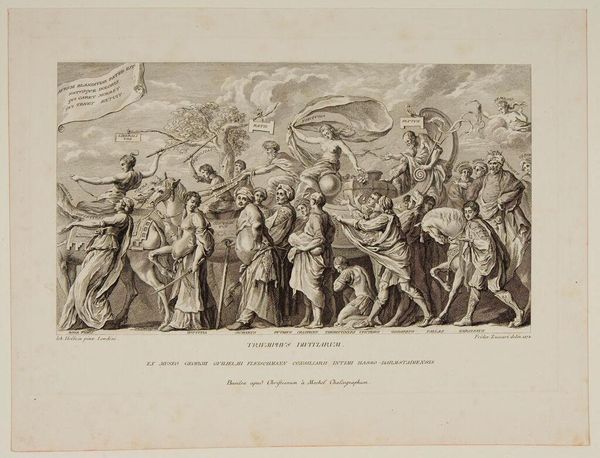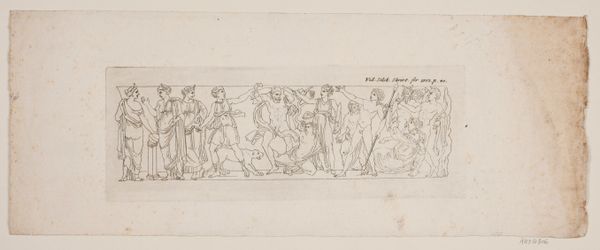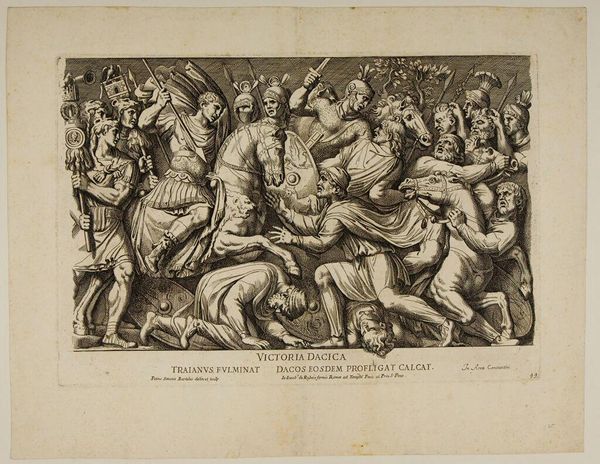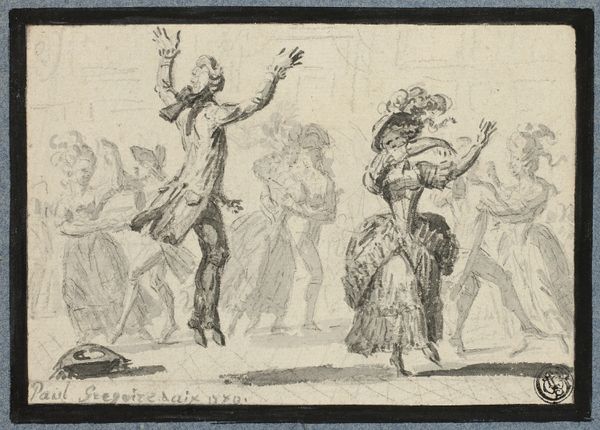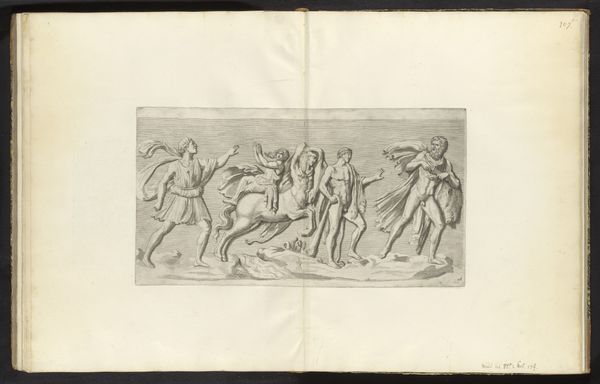
Dimensions: Image: Upper Frieze: 11.1 Ã 35.3 cm (4 3/8 Ã 13 7/8 in.) Image: Lower Frieze: 11.2 Ã 35.3 cm (4 7/16 Ã 13 7/8 in.) Plate: Upper Frieze: 12.7 Ã 36 cm (5 Ã 14 3/16 in.) Plate: Lower Frieze: 12.6 Ã 36 cm (4 15/16 Ã 14 3/16 in.) Sheet: 27.3 Ã 42 cm (10 3/4 Ã 16 9/16 in.)
Copyright: CC0 1.0
Curator: This is Bernard Picart's "Bacchanal," a fascinating pair of friezes rendered in engraving. The work can be found here at the Harvard Art Museums. Editor: It’s visually chaotic! There's so much frenetic energy packed into these two registers, like a snapshot of unrestrained revelry. Curator: Consider the context: Picart, working in the late 17th and early 18th centuries, was part of a burgeoning print market. Engravings like this democratized access to classical imagery. Editor: Right, the Bacchanal, traditionally a scene of ecstatic liberation, gets filtered through Picart's lens. I can't help but think about the politics of display – who gets to participate in the "revelry" depicted? Curator: And how the very act of engraving, of multiplying these images, shifts our understanding of value, of access, of the consumption of art itself. It moves artistic creation into an arena of production and distribution. Editor: It also makes me think about the power of art to either reinforce or subvert social norms. The Bacchanal myth, for example, as a commentary on societal constraints… Curator: I'm struck by the labor invested in creating these detailed lines, a testament to the engraver's skill. Editor: Precisely, and how that skill intersects with broader dialogues about power, representation, and freedom.
Comments
No comments
Be the first to comment and join the conversation on the ultimate creative platform.
